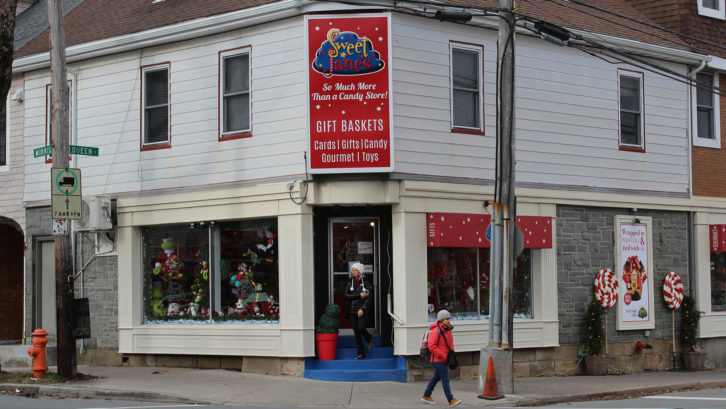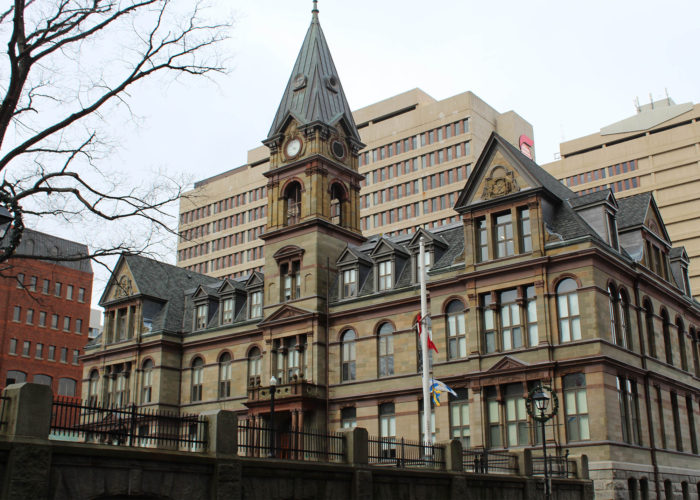Can old heritage buildings be updated to be more environmentally friendly?
Heat pumps, air circulation and insulation can help to reduce the carbon footprint of buildings

caption
This heritage building, located at the corner of Birmingham and Clyde streets, makes use of insulation to cut down on fuel.When it comes to being more environmentally friendly, Elsa Lam, an architectural historian, says every building should make the change — including historic properties.
“It can be tricky to work with heritage buildings,” says Lam, editor of Canadian Architect Magazine. “But there are ways you can retrofit them.”
Lam believes if there are changes that need to be made to heritage building to make them more environmentally and energy efficient, then they should be made. This includes changing the heating sources, improving air circulation and adding insulation.
Are these updates possible with old heritage buildings? Related stories
A heritage building can be updated, as long as its character-defining traits are not altered. An example would be if one of their defining characteristics is stained glass windows, then the windows cannot be altered. Canada’s Historic Places has standards and guidelines for the conservation of historic places in Canada. The Halifax Regional Municipality follows these standards for certifying heritage buildings.
Andrew Murphy is president of the Heritage Trust of Nova Scotia, which advocates for the preservation of heritage buildings. He says there’s an obligation to make heritage buildings more environmentally friendly.
“We can retrofit most heritage buildings and bring them up to an acceptable standard,” he says. “We all have a responsibility to get more aware about our planet.”
Murphy says there are ways to make a heritage building more environmentally friendly without altering its character.
Many heritage buildings have thick walls, and when proper insulation is added, it drastically cuts down on the fuel needed to heat them. Murphy also recommends adding air exchange systems to prevent moisture from causing rot.
Murphy says heat pumps are becoming more common in heritage buildings. A heat pump takes in warm air, rather than creating it, and transfers it into the hot water.
“Heat pumps are a huge advantage now,” says Murphy. “You can heat a space very efficiently with them.”

caption
This heritage building, the location of Sweet Jane’s, is fuelled by natural gas, which drastically cuts energy costs.Jenny Lugar, chair of the Halifax heritage advisory committee, agrees that heat pumps can be a major asset to helping heritage buildings go green. She adds that putting in new windows can also help the building retain heat.
Lugar says making a heritage building energy efficient is a natural part of restoring it.
“Old heritage buildings, while beautiful, leak heat like crazy,” says Lugar. “Any upgrade people do makes them more environmentally friendly.”

caption
Jenny Lugar says Halifax City Hall is an example of a heritage building that has been retrofitted to be environmentally friendly.Lugar says the city can help foot the bill for these updates through grants and other funding. The Heritage Incentives Program can provide grants of up to $15,000 for residential properties and $25,000 for commercial properties. To be eligible, the building must be privately owned and already registered as heritage.
Lugar says even designating a building as heritage goes a long way in helping to protect the environment. The carbon put into constructing the building has already been used, so tearing down the building and putting up a new one in its place creates a much larger carbon footprint.
As for the state of Halifax’s heritage buildings, Andrew Murphy says there’s still a lot of work to do before they can all be considered environmentally friendly.
“I think that over the next 20 years, hopefully, they will be in good shape.”
About the author

Jakob Postlewaite
Jakob Postlewaite is a fourth-year journalism student at the University of King's College. He has worked as a columnist and reporter for the...